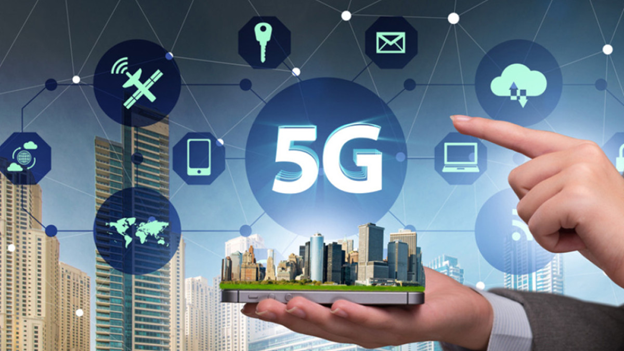Asia-Pacific Insights
Exploring the latest trends and news in the Asia-Pacific region.
5G: The Invisible Network Reshaping Connectivity
Discover how 5G, the invisible network, is revolutionizing connectivity and transforming our digital lives. Join the future today!
What is 5G and How Does it Work?
5G, or fifth generation wireless technology, represents a significant advancement in mobile network capabilities. It is designed to provide faster speeds, higher capacity, and lower latency compared to its predecessors. This technology enables devices to connect and communicate in real-time, supporting a wide range of applications from streaming high-definition video to powering smart cities. With speeds potentially exceeding 10 gigabits per second, 5G not only enhances user experience but also opens up new possibilities for innovation in the Internet of Things (IoT), autonomous vehicles, and more.
The operation of 5G relies on a combination of higher frequency bands and advanced technologies such as millimeter waves, massive MIMO (multiple input multiple output), and beamforming. By utilizing these techniques, 5G can transmit data more efficiently and with greater precision. Additionally, 5G networks are built to accommodate a massive number of connected devices, making it suitable for densely populated urban areas. As this technology continues to roll out globally, it is expected to transform the way we communicate, work, and live, enhancing everything from telemedicine to remote work.

The Benefits of 5G: Revolutionizing Connectivity for Businesses and Consumers
As the world embraces the technological advancements of the 21st century, 5G stands out as a transformative force enhancing connectivity for both businesses and consumers. This next-generation wireless technology offers significantly faster data speeds, reduced latency, and the ability to connect a multitude of devices simultaneously. For businesses, this means improved operational efficiency and the potential for innovative applications such as smart factories, remote healthcare solutions, and advanced IoT systems. According to industry experts, leveraging 5G can lead to a competitive edge by enabling real-time data analysis and streamlined communication.
For consumers, the impact of 5G is equally compelling. With enhanced mobile broadband capabilities, users can enjoy seamless streaming of high-definition content, immersive gaming experiences, and instant access to cloud services. Furthermore, 5G paves the way for the widespread adoption of smart home technologies, allowing devices to communicate effortlessly and enhance daily life. In essence, 5G is not just a technological upgrade; it’s a revolution that promises to reshape how we connect, work, and live in an increasingly digital world.
Common Myths About 5G: Separating Fact from Fiction
As 5G technology rolls out globally, numerous myths have emerged, leading to widespread confusion. One common misconception is that 5G is responsible for severe health risks, including cancer and other illnesses. However, scientific studies have shown that the radio frequencies used by 5G networks are well below the limits set by international health agencies. For instance, the World Health Organization (WHO) states that no adverse health effects are expected with exposure to levels of radiofrequency radiation below safety guidelines.
Another prevalent myth is that 5G will lead to widespread job loss due to automation and the need for fewer human workers. While it is true that technology can automate various tasks, the implementation of 5G actually creates new job opportunities in network development, maintenance, and cybersecurity. According to industry experts, the rise of 5G is expected to generate millions of new jobs, as well as drive innovation across multiple sectors, including healthcare, education, and transportation.